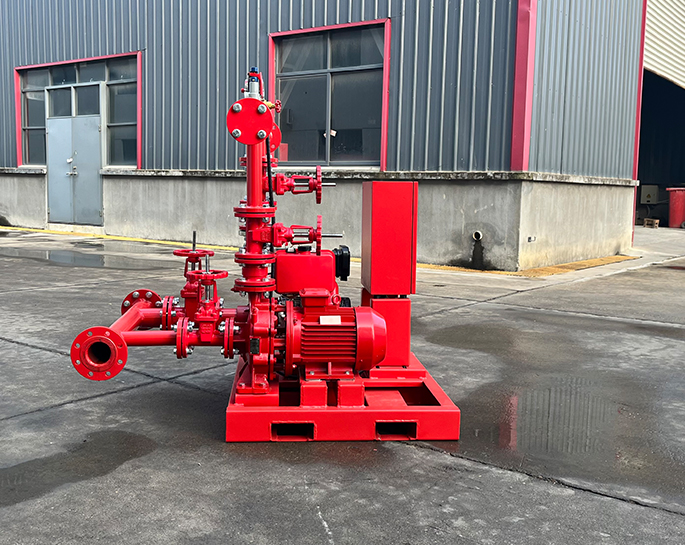How are fire pump systems affected by changes in water temperature due to seasonal variations?
Jan 09, 2024
Share:
Fire pump systems can be affected by changes in water temperature due to seasonal variations in several ways:
1. **Water Density:** Water density changes with temperature. As the temperature decreases, water becomes denser, which means there is more mass per unit volume. This can affect the performance of the pump, as it is designed to move a specific volume of water. A denser water may require the pump to work harder.
2. **Viscosity:** The viscosity of water also changes with temperature. Warmer water is less viscous than colder water. Changes in viscosity can impact the efficiency of the pump and the flow rate.
3. **Pipe Material:** Seasonal variations in temperature can affect the material properties of pipes. For example, in cold temperatures, pipes may become more brittle and prone to cracking. This could lead to leaks and reduce the effectiveness of the fire pump system.
4. **Freezing Concerns:** In cold climates, the risk of water freezing in the pump or pipes is a significant concern. Frozen water can damage the pump and pipes, leading to system failures. To prevent freezing, systems may include insulation, heat tracing, or other measures.
5. **System Testing:** Seasonal changes may require adjustments to the fire pump system, and it's important to regularly test the system to ensure it functions correctly in different temperature conditions. This includes testing the pump, valves, and associated components.
6. **Water Source Availability:** Seasonal variations can also impact the availability of water sources. For example, in colder seasons, natural water sources may freeze or be less accessible, requiring alternative water supply arrangements.
It's crucial for fire pump systems to be designed, installed, and maintained with consideration of the local climate and seasonal variations. Regular inspections, testing, and preventive maintenance are essential to ensure the reliable operation of the system throughout the year.

1. **Water Density:** Water density changes with temperature. As the temperature decreases, water becomes denser, which means there is more mass per unit volume. This can affect the performance of the pump, as it is designed to move a specific volume of water. A denser water may require the pump to work harder.
2. **Viscosity:** The viscosity of water also changes with temperature. Warmer water is less viscous than colder water. Changes in viscosity can impact the efficiency of the pump and the flow rate.
3. **Pipe Material:** Seasonal variations in temperature can affect the material properties of pipes. For example, in cold temperatures, pipes may become more brittle and prone to cracking. This could lead to leaks and reduce the effectiveness of the fire pump system.
4. **Freezing Concerns:** In cold climates, the risk of water freezing in the pump or pipes is a significant concern. Frozen water can damage the pump and pipes, leading to system failures. To prevent freezing, systems may include insulation, heat tracing, or other measures.
5. **System Testing:** Seasonal changes may require adjustments to the fire pump system, and it's important to regularly test the system to ensure it functions correctly in different temperature conditions. This includes testing the pump, valves, and associated components.
6. **Water Source Availability:** Seasonal variations can also impact the availability of water sources. For example, in colder seasons, natural water sources may freeze or be less accessible, requiring alternative water supply arrangements.
It's crucial for fire pump systems to be designed, installed, and maintained with consideration of the local climate and seasonal variations. Regular inspections, testing, and preventive maintenance are essential to ensure the reliable operation of the system throughout the year.







